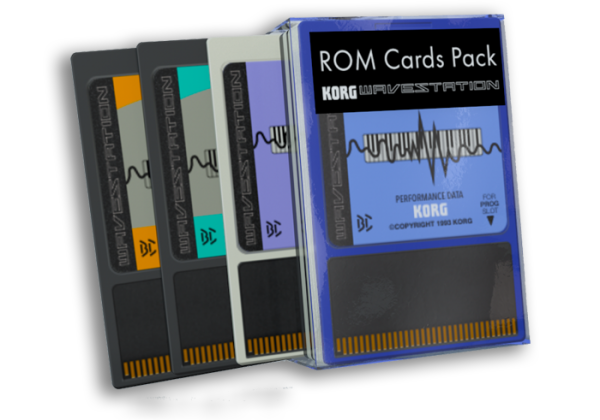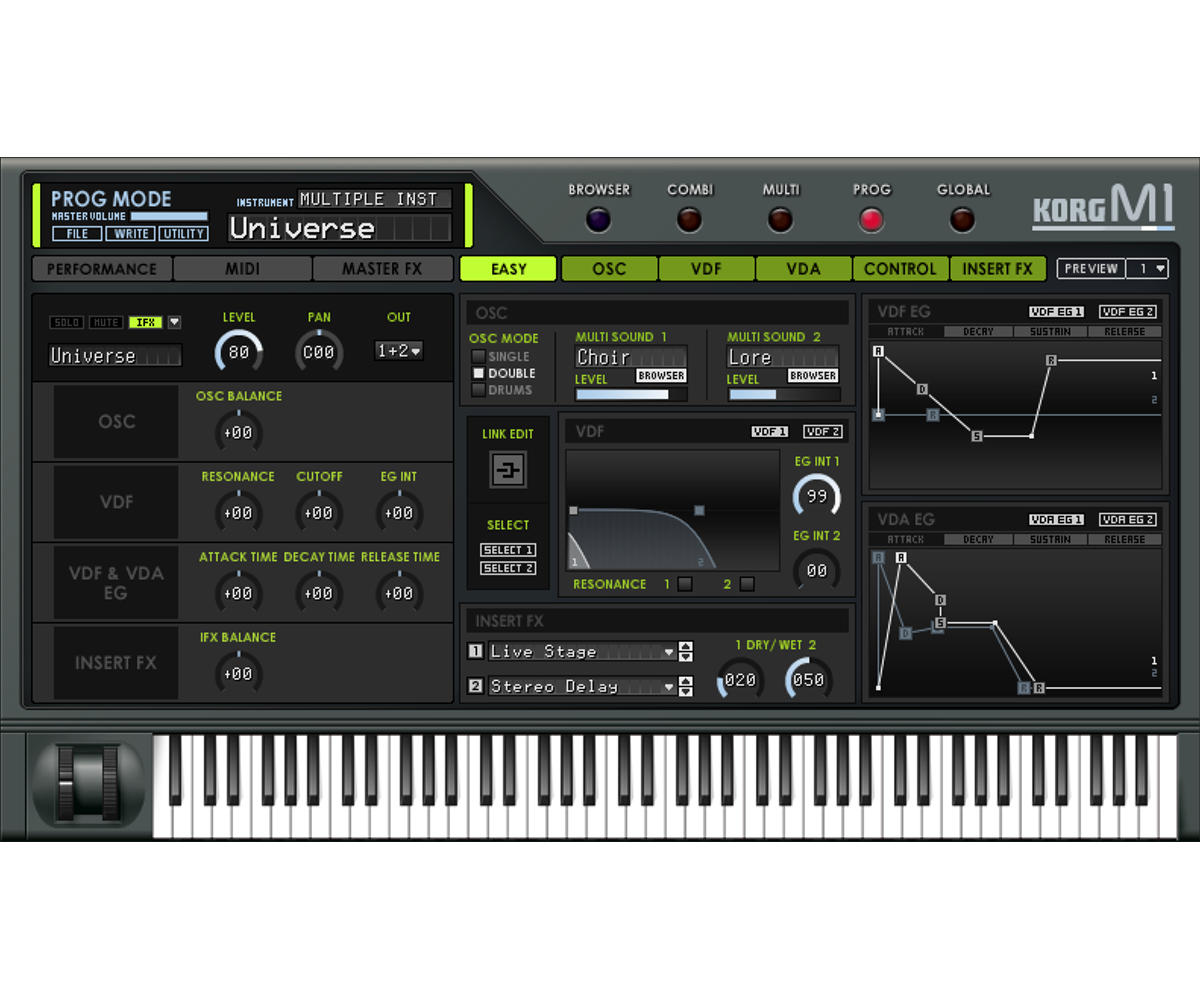
#PRESETS ON KORG WAVESTATION EX PATCH#
The mix envelope for a two-oscillator patch ordering is arranged on a horizontal sort or axis, and is interpreted as one-dimensional vector synthesis. The volume blend or mix ratio between oscillators is varied over time via a dedicated mix envelope, in real-time via the front panel's vector joystick, or via other controllers such(a) as LFOs, aftertouch, and MIDI. On the Wavestation, vector synthesis can be applied on any two or four-oscillator patch.


Simply, vector synthesis is dynamic timbre command over 2 or more voices oscillators. In Performance mode, up to thirty-two discrete wave sequences can be played at the same time by layering eight 4-voice patches, although the actual number of playable wave sequences may be less because an extra oscillator is asked to execute a crossfade. In a Patch, different wave sequences can be assigned to used to refer to every one of two or more people or matters of the four oscillators, thus the Wavestation is capable of generating four distinct wave sequences playing simultaneously during a single note. The result is a continuously changing sound, producing either a smooth blend of crossfaded waves, or semi-arpeggiated and rhythmic sequences, or a combination of both. Additionally, wave sequences can be looped forward or forward/backward directions to play indefinitely or for a finite duration they may also be synchronized to the Wavestation's internal clock at a user-adjustable tempo or to MIDI clock signals from a sequencer. step in the wave sequence can score a different duration, pitch, efficient tuning, level and crossfade amount. By combining wave sequencing with vector synthesis-the process of mixing and morphing between house waveforms of audio samples-the Wavestation differed from other sample-based synthesizers of the digital era.Ī wave sequence is a programmed list of PCM waves playing in succession.

Moreover, a wave sequence can be programmed to "jump" to all PCM wave in ROM memory, whereas similar synths were intentional to proceed sequentially through the wavetable. Wave Sequencing refreshing the vector synthesis on Prophet VS, by incorporating the ability to crossfade up to 255 waveforms, rather than only four. The two primary synthesis concepts designed into the Wavestation were wavetable-lookup synthesis, including the multiple-wavetable synthesizers realized as PPG Wave that was submitted by Palm Products GmbH in the early 80s, and the vector synthesis realized as Prophet VS by Sequential Circuits, Inc. The Wavestation lineup consisted of four models: the Wavestation and Wavestation EX keyboards, and the Wavestation A/D and Wavestation SR rackmount sound modules. Keyboard Magazine readers filed the Wavestation its "Hardware Innovation of the Year" award, and in 1995 Keyboard referred it as one of the "20 Instruments that Shook the World." The Wavestation's "Advanced Vector Synthesis" sound architecture resembled early vector synths such(a) as the Sequential Circuits Prophet VS.ĭesigned as a "pure" synthesizer rather than a music workstation, it lacked an on-board song sequencer, yet the Wavestation, unlike any synthesizer prior to its release, was capable of generating complex, lush timbres and rhythmic sequences that sounded like a variety up soundtrack by pressing only one key. Its primary innovation was Wave Sequencing, a method of multi-timbral sound mark in which different PCM waveform data are played successively, resulting in continuously evolving sounds.

#PRESETS ON KORG WAVESTATION EX SOFTWARE#
The Korg Wavestation is a vector synthesis synthesizer first produced in a early 1990s together with later re-released as a software synthesizer in 2004.


 0 kommentar(er)
0 kommentar(er)
